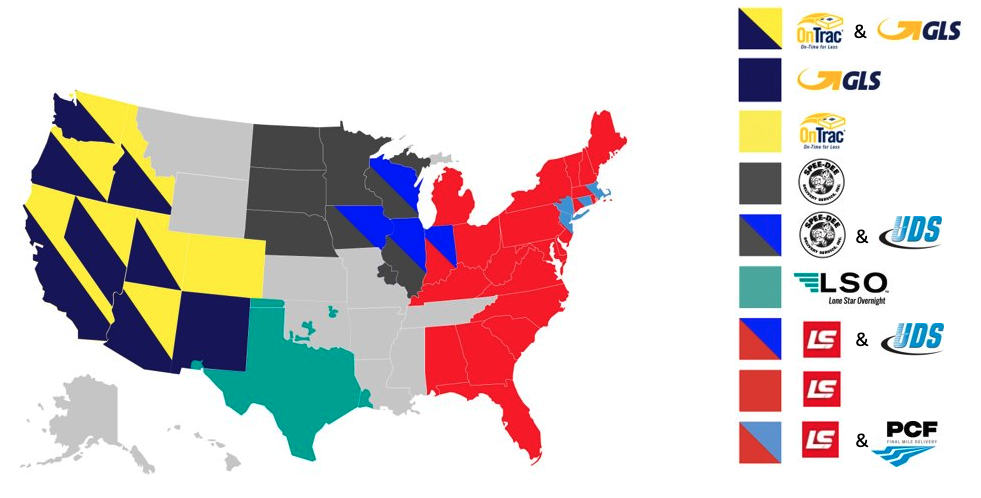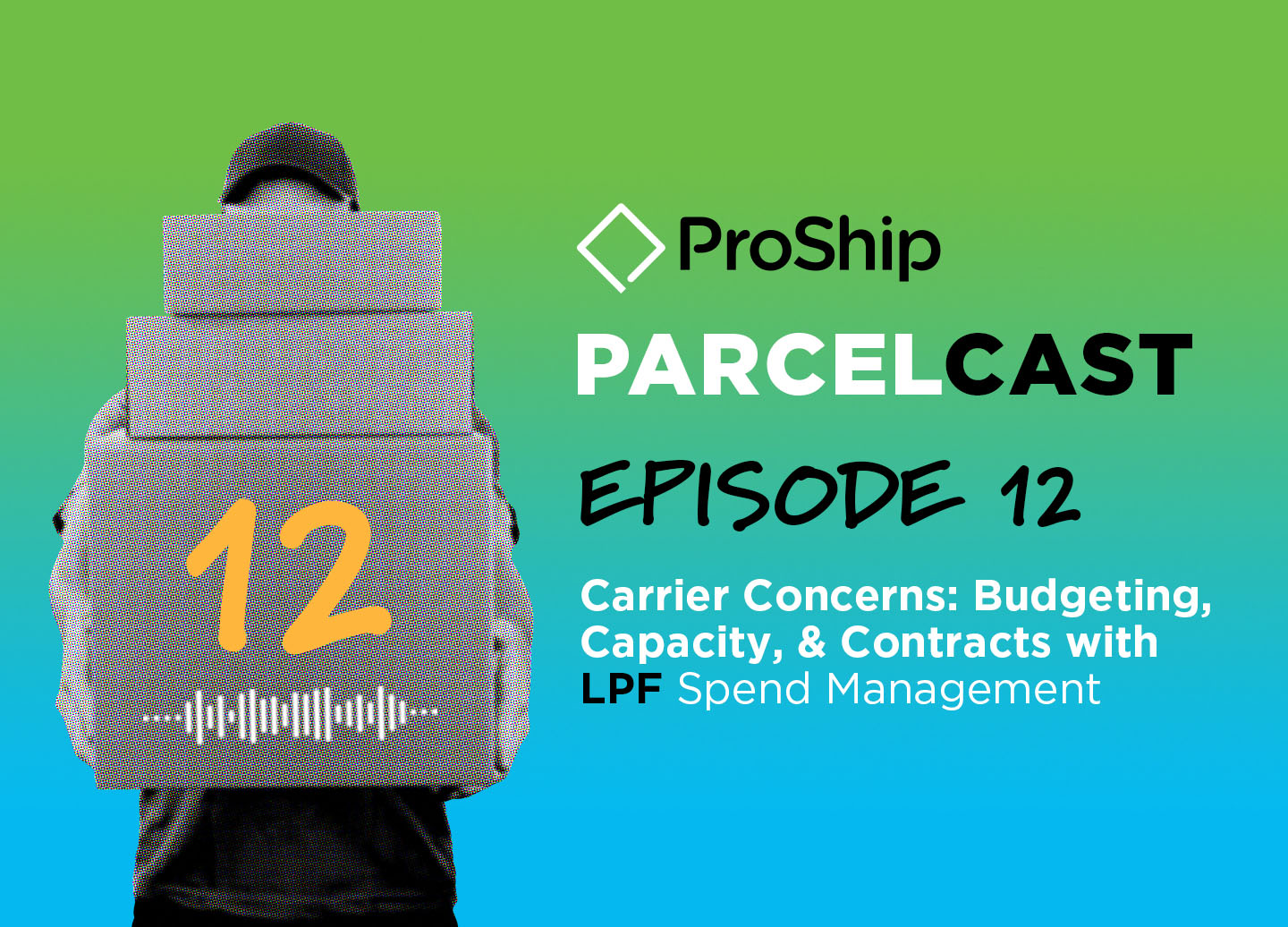ProShip uncovers the truth behind common carrier diversification misconceptions
The waves that the pandemic sent through the supply chain and logistics industries are still being felt by many shippers today. So how have some companies thrived while others are falling behind? Making news recently, a CEO cited USPS service issues as the main driver behind their disappointing holiday quarter performance. With this public example in mind, ProShip shipping experts have encouraged taking a closer look at carrier diversification to not only survive but thrive during the capacity constraints many companies are still suffering from today. Let’s take a look at 4 carrier diversification myths that may be holding some decision-makers back.
Carrier Diversification Myth 1: You should wait until the pandemic is over to identify and onboard new carriers
FALSE. ProShip saw a nearly a 300% increase in the number of carriers current customers added year-over-year from late 2019 to late 2020. This shows the impact that the pandemic had on supply chains across the country and exemplifies a shift in mindset amongst parcel shipping strategists. In other words, the new norm is utilizing an expanded shipping network made up of multiple carriers.
Single carrier or national carrier-only strategies just won’t cut it with the historic volume capacity seen in 2020. You need to start leveraging more carriers now to ease capacity constraints and avoid the congested shipping hubs of major carriers. This doesn’t take into account the sales you are leaving on the table due to the lack of fast shipping options (like same-day or ship-from-store) and high shipping costs that your competition may already be employing.
Carrier Diversification Myth 2: Onboarding new carriers will hurt your negotiated rates with your primary carriers and end up costing you more money in the long run.
FALSE. The key to adding to your carrier mix is finding the right fit. Identifying the right carrier package niche against your packages is an important first step in that process. The next steps are conversations with the carriers to find out if the partnership will be mutually beneficial and how to get the program off the ground.
The ideal balance between carriers involves understanding the minimum spend amount required to receive incentives or discounts from a specific carrier, as well as not exceeding the volume shipping thresholds set by those same carriers. Because you are dealing with these 2 constraints, your strategy should be two fold: monitoring your service level with each of these carriers and having the carrier flexibility to use another carrier if you get near one of these constraints, i.e. “carrier volume balancing”.

Keeping an eye on this balance doesn’t have to be work either. The parcel shipping software solution you are using should be leveraging this data and making automated decisions based on it. [Learn about Advanced Date Shopping]
Carrier Diversification Myth 3: You can’t use a regional carrier if your shipping location is outside of their distribution network.
FALSE. It certainly is possible to leverage a carrier that is outside of where your distribution center, warehouse, store, 3PL or manufacturer is located. Side Note: If you aren’t using all of these channels in your distribution strategy – you probably aren’t shipping your inventory as efficiently as you could be.
While the opportunity to partner with a regional carrier looks promising, it is important to remember that your partnership is volume dependent. If you are outside of a regional carrier’s territory or you are thinking their region is too small, carriers are always expanding their network through partnerships or through their own assets.
However, there are some workarounds. If you do have enough volume, you can set up a “line-haul” or “zone skip”. This means you consolidate a large volume of packages and hold them until they reach full truckload (TL) (or less-than-truckload (LTL) if it makes sense) and deliver to the package’s final destination, in this case a regional carrier’s hub.
The key is to reach out to find the right fit for your shipping profile. Here’s an example of some common regional carriers’ coverages:

remember, carriers are volatile and coverage changes quickly!
Keep in mind that using these regionals properly breaks down into juggling 2 primary components with a partner that can make the entire process seamless: visibility and an appropriate cost. Tracking should still be available for the package no matter where it is within its shipping journey. The price must be justified as a viable option when tallying up the cost of each step within the shipment. Side note: Using unconventional or outside the box approaches could offer high rewards. For example, the use of localized 3PL’s or micro-warehousing could allow you to leverage same-day or one-day service levels if they fit your shipping model.
Carrier Diversification Myth 4: Onboarding new carriers will increase the complexity of your fulfillment process.
FALSE. Adding new carriers shouldn’t affect the difficulty of your supply chain if you are utilizing multi-carrier shipping software. Once an agreement is in place with a carrier, the software takes the work out of onboarding. Reviewing business rules and ensuring you have the physical capacity to transfer the custody of the package, whether that is a new door or a staging location, should be the most complex steps in a warehouse or store during the addition of a new carrier. With a multi-carrier shipping solution, most carrier onboarding takes days or, in extreme cases, a month.
Final thoughts on Carrier Diversification
The takeaway from all of these myths is simple: learn as much about your shipping profile as possible to strategically partner with the right carriers. A successful regional carrier strategy requires an understanding of your shipping profile, as well as what the intended regional carriers can successfully ship in their network. Selecting a variety of regional carriers to support your volume and utilizing a multi-carrier shipping solution allows you to gain capacity and optimize your transportation spend.

Schedule a ProShip demo
Ready to take your parcel shipping strategy to the next level? Schedule a demo with one of our shipping experts to see how ProShip multi-carrier shipping software can unlock parcel revenue potential and exceed customer expectations.

 Back to Blog
Back to Blog






